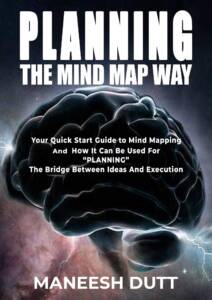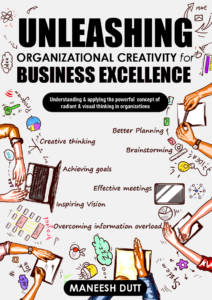A question that I am frequently asked is how does Mind Mapping benefit an Organization? Mind Mapping as a technique has such a wide application that we need to delve into the roles across an organizational hierarchy to answer this common, but very pertinent question.
This is what I attempt in this blog.
Mind Mapping is a technique that is sector agnostic & inside an organization can be deployed across its hierarchy. Let’s discover how.
Simplistically, an Organization can be divided into 3 layers: Top Management, Middle Management and the final bottom layer of the hierarchy.
The Top managements primary role is to work “on” the business taking the Organization to its next trajectory. An important function of this layer is to provide direction to the Organization and grow the business. To be able to do this it is imperative to know the big picture, collect inputs from all members of the management team, synthesize all the information intelligently and finally arrive at a set of clear action points.
Whether brainstorming a business strategy or the company mission/vision, the above elements will be needed. And this is exactly where Mind Mapping can be used to get effective and efficient results. An example of a mind map template which can be used for developing a business plan is as follows:

The middle layer of the organization has the responsibility of providing inputs to the top management, implementing the management decisions and managing the operations.
To this end, the managers in this layer need effective communication, goal setting, project planning, brainstorming and other related skills. And an important and common ingredient among all these elements is the frequent interaction that managers must do with their teams and peers via meetings. Now, am sure you would agree, in general meetings can be pretty boring unless done the right way ! Here again Mind Maps come to the rescue, transforming boring meetings into interesting and engaging platforms with consistently positive outcomes. And the not so obvious benefit is that, in the process of using Mind Maps, managers are able to hone their essential skills such as communication, brainstorming etc.
An example of a Mind Map template which can be useful for this layer of management is the one below, for establishing a communication plan in general for a team or at the start of any new project:

Finally, coming to the last layer of the hierarchy, these are the teams whose primary focus is to execute. Their execution can be effective only if they have a clear understanding of their goals, company products, Standard Operating Procedures, work instructions. They are being exposed to new learning from a variety of sources: meetings, workshops, technical literature, company manuals etc. Here again Mind Mapping can aid in learning as well improving recall of the information learned. Additionally, planning both as an adherence to a project plan as well as day to day planning, is almost like a life skill for their future success. This again can be easily taught and reinforced using Mind Maps.
The following is a simple example of a Mind Map which can be beneficial for employees at this level of the hierarchy for planning their week. Each of the main branch stands for a weekday and the tasks for the week can easily be captured on the next level branches.

The above is just a glimpse of how Mind Mapping can be used across the hierarchy in an organisation and once you start using Mind Maps you will yourself discover a much larger list of their applications.
If you are interested in learning more about Mind Maps and it’s application, you can refer to my book “ Unleashing Organizational Creativity for business excellence’, available for a free download on my website.
Oh yes, all the above mind map templates are also available at Biggerplate.Com and additional such Mind Maps are available in my book “How to Have Mind Blowing, Engaging & Energizing Meetings”. (also available on Amazon)
With that Happy Mind Mapping!



